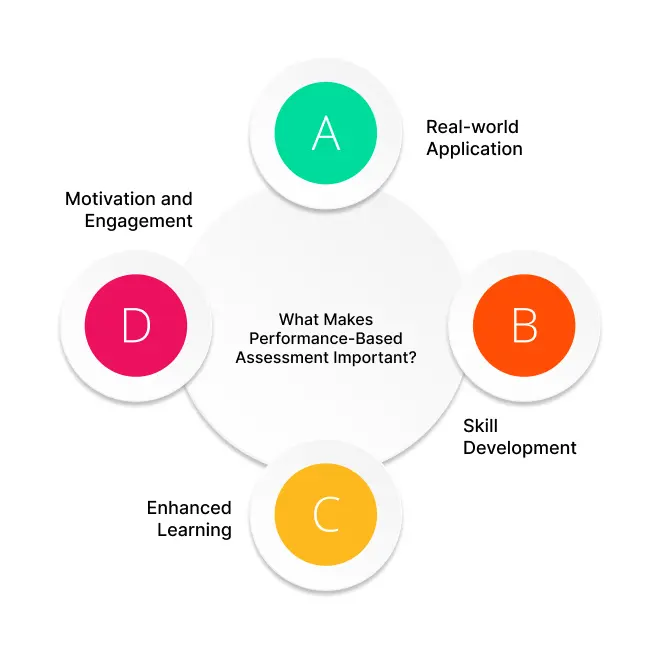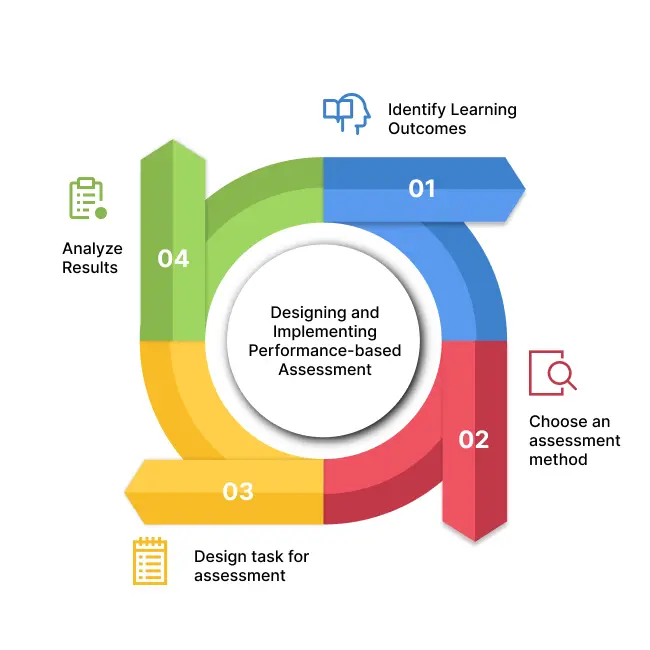How Performance-Based Assessment Can Transform Your Educational Approach
For quite a long time, education meant memorizing and retaining information. However, the shift in focus towards skill and knowledge-based education became prominent over time, bringing performance-based assessment to the surface.
Performance-based assessment (PBA) is an evaluation method that has brought a major change to the education world. Students now pass not just with good grades but also know how to apply it in real-life situations. Let's look deeper into performance-based assessment and see how it promotes students' growth.
Table of Contents
- What is Performance-Based Assessment?
- What Makes Performance-Based Assessment Important?
- Types Of Performance-Based Assessment
- Designing and Implementing Performance-based Assessment
- Uses of Performance-Based Assessment
What is Performance-Based Assessment?
As the name itself suggests, performance-based assessment is the way to evaluate students by assessing how well they apply the knowledge they gained by studying in relevant real-life situations. Unlike traditional assessments, performance-based assessments focus on assessing the understanding and practical application of what has been taught.
In PBAs, students must use what they have learned in practice. This can be done through activities like presentations, simulations, and experiments.

What Makes Performance-Based Assessment Important?
Performance-based assessment has proved itself to be very important for the modern education system. Here is what makes performance-based assessment important.
Real-world application
Performance-based assessment puts students in a situation that stimulates real life. This allows them to apply their knowledge and understand the practical use of what they have learned in the course.
Skill development
This assessment helps in analyzing gaps and requirements in skills. With this insight, students can be provided appropriate guidance and support to assist them in their education journey.
Enhanced learning
Since in PBA, students now focus on practical application, we start developing a deeper understanding & retention of what they learn. As students apply what they learn in a realistic scenario, they understand and remember the material better.
Motivation and engagement
When students successfully apply their knowledge in real life, they feel a sense of achievement and productivity. This motivates them to work and study more diligently.
Types Of Performance-Based Assessment
Performance-based assessment can be effectively practiced through four different types that are listed below.
Authentic assessments
In authentic assessment, students must fully embrace the concept that they are learning. Like when learning and researching in history class, they must immerse themselves and act like a real historian. This allows them to dive deep into the concept of the character they're learning about and understand it better.
Portfolio assessments
As the name suggests, this assessment requires students to prepare multiple projects/portfolios and submit them in a stipulated time. This helps teachers observe how well they have understood the different aspects of the topic.
Project-based assessments
Base assignment students are required to complete a project that has very complex concepts. This is to clarify the extent to which they have understood the learning materials.
Simulation assessments
Simulation assessment is an immersive way for students to experience the study material and enhance their understanding of the subject matter. Teachers can include role-play games to place them in scenarios that simulate real-world situations. This gives them a chance to develop their critical thinking skills.

Designing and Implementing Performance-based Assessment
Designing and effectively implementing performance-based assessment is simple and editors. Here is all you need to know to effectively design and implement PBA.
Identify learning outcomes
Redefining the learning outcomes or objectives that you wish to observe from this assessment. These outcomes must align with your educational institutions for curriculum. This is necessary as will help in the further steps of designing and implementing performance-based assessment.
Choose an assessment method
With your learning outcome clearly defined, you need to choose an assessment method. We have discussed the different types of assessment methods earlier. The chosen assessment methods should be appropriate and suitable for further learning outcomes that were decided earlier.
Design task for assessment
As you work on creating tasks for the assessment, make sure the tasks are authentic as well as relevant to the curriculum. These tasks should be designed to create a realistic situation for students to apply their knowledge. You may include rubrics, a scoring guide, and performance indicators to maintain transparency.
Analyze Results
With all the above steps done, students will appear and take their assessments. Once they're done with it, it is time to see their performance. Start by analyzing students' overall walkthrough of the course and assess their performance in all the assessments. Check whether they have truly understood the concept and everything they learned. Also, review whether they have achieved the defined learning outcomes.
Uses of Performance-based Assessment
When it comes to using PBAs, one thing you should know is there is no one right way to use these assessments. Performance-Based Assessment (PBA) is incredibly flexible and allows educators to tailor it to various teaching and learning situations. Depending on the various purposes or objectives you wish to achieve, PBAs can be:
- Focused on the steps students take to solve a problem.
- Centered on evaluating the final product or result.
- Integrated into the regular curriculum.
- Used as a separate, stand-alone assessment.
- Applied as a formative tool to provide ongoing feedback.
- Used for summative purposes to evaluate overall learning.
- A one-time task or project that showcases what students know.
- Part of a larger portfolio that tracks progress over time.
- Tailored to a single classroom’s objectives.
- Standardized across multiple classrooms or even schools.
- Graded by the classroom teacher who knows the students well.
- Assessed by external evaluators for an unbiased perspective.
Conclusion
Performance-based assessments are a very important and impactful method to evaluate students. Rather than focusing on assessing the memorization capacity of students, it is helping in assessing and developing knowledge and skills needed in real life.
This method of assessment is very useful and really necessary in this era where knowledge is abundant in youth but no idea of how to apply and utilize it.




